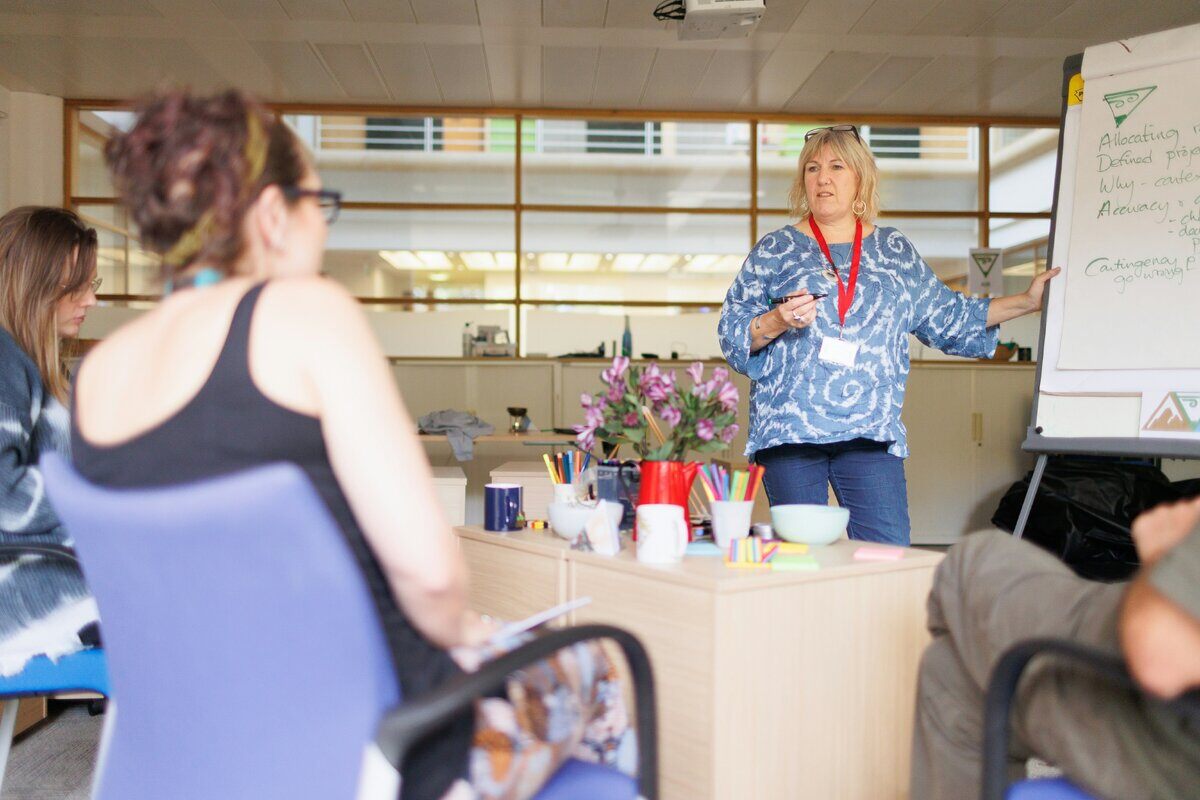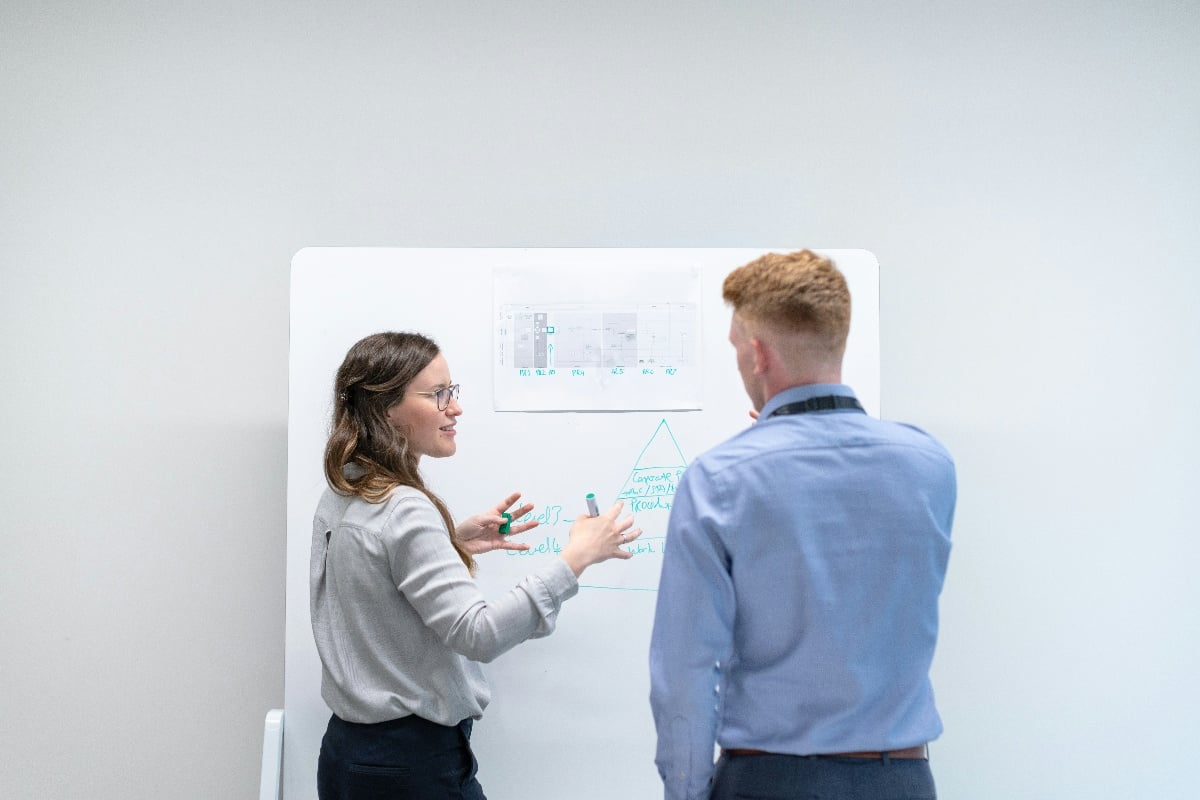
Learning Experience Design: A Learner-Focused Approach to Education
Throughout history, the nature of the learning experience has always been dependent on technology.
With the prevalence of information technology, today's learners are more connected and capable than ever before.
The evolution of the learning experience, from the classroom to the home computer to mobile devices, has shifted from teacher-focused to student-focused.
Here, we will examine what we refer to as learner experience design (LXD).
We will look at the ways webinar platforms can be used to optimize your efforts to deliver a superior digital learning environment for today's tech-savvy learners.
The Learning Experience Is Evolving
In recent years, the fact that the human learning experience is subject to change has become clearer than ever before.
We have long known that the physical media on which we store and share information has always determined the ways information is shared.
From cave paintings to stone tablets, to papyrus, and so on, until the age of the Gutenberg printing press, we have seen in no uncertain terms that media dictates the ease and mode of information sharing.
Today, these lessons have been cemented in our minds with the rapid evolution of digital media.
With the ease of information transmission at an apparent peak, new innovations come at an accelerated rate.
That being the case, we have reached a point in the development of the learning experience where we decide how information is transmitted, consumed, and experienced.
This is the dawn of the age of learning experience design.
But before moving on to the meaning of learning experience design, we mustn't forget the power of the human voice and speaker presentation to share information.
Steven Spielberg once said that the best way to add production value to a film is with the human face and the human voice.
This is where the power of learning experience design shines most: in its ability to amplify the talents of gifted teachers to reach more people and to allow the learner to consume information at a time and place that best suits them best.
Learning experience design enables us to magnify the natural tendency of human beings to teach and learn in ways that could hardly have been imagined a century ago.
Now, let's learn more about LXD.
Intro to Learning Experience Design
Rooted in the intersection of a host of pedagogical disciplines, LXD is the digital art of crafting a learning experience that engages learners where they are.
It is first about engaging the student in a way that gains and holds their attention. Then the learning experience designer looks for ways to make the session as informative as possible.
To put it in philosophical terms, LXD attempts to both Please and Instruct.
It offers the learning experience designers a wealth of powerful tools that the thinkers who coined that phrase could probably never have envisioned.
To get an idea of what we mean, imagine your favorite vacation and compare it to your least favorite vacation.
Certainly, you learned something from both.
You probably absorbed much more meaningful information from the vacation you enjoyed.
You probably discovered a new location and learned about its history, culture, and people.
Conversely, during your least favorite vacation, you probably only learned what not to do when planning a long-awaited getaway.
While that is valuable, we prefer that the learner absorb information about the intended subject, rather than be discouraged by the experience itself.
This is a good analogy of what LXD attempts to achieve.
According to Niels Floor, a leading expert in LXD,
"Learning experience design is the process of crafting learning environments/experiences that optimize the learner's desire and ability to achieve a desired learning outcome in a way that is learner-centric and goal-oriented."
With this definition in mind, we can see that LXD is about taking the needs, access, mindset, maturity level, interests, learning style, and other factors into consideration when we craft the learning experience.
So, you may be wondering, "How does LXD work," and that's an appropriate question.
Before we examine the tools LXD places in your hands, let's talk about why it is a superior way to optimize the learning/teaching experience.
From Teacher-Focused to Learner-Focused
It could be said that the evolution of the learning experience has been all about expanding the bandwidth over which information passes from the teacher to the learner.
Today's digital learning environments benefit from the fact that much more information passes in the opposite direction.
It is arguable that this shift toward learner-focused learning typifies LXD.
Indeed, it is a revolution in learning, made possible by technology, which leverages critical input from the student.
Because of this, LXD has all of the following qualities:
- Personalized: LXD is typified by its tendency to leverage the unique mental disposition of students, their learning styles, interests, and strengths as a guide for the creation of an optimal learning environment.
- Convenient: The very nature of information technology makes convenience for the learner highly achievable, to say the least. The student is able to access critical course materials in her or his own time. At a time when so much learning is being done by adults with responsibilities, the convenience factor makes learning demonstrably more achievable.
- Connected: As LXD is rooted in webinar technology and based on webinar strategy, students are able to connect and collaborate with other students singly and in groups. They can access instructor assistance in many ways. They can also look at the course material from different sections of the learning journey, as well as the wealth of information available on the Web, all while remaining immersed in the curated learning experience.
- Learner-driven: Similar to the advantage of being personalized, it is also important to understand that the student sets the pace. This simple idea has been proven effective in alternative learning environments since at least the 1960s. It started with early reform/continuation schools for behavior-challenged public school students, whose documented success corroborates the value of the model.
LXD leverages the value of allowing the learner to work at a self-selected pace, eliminating counter-productive stress and rushed academic performance.
Be sure to check out this instructive example of a learner-driver instructional setting as described by Dr. Bucky Dodd, LX Studio's former executive director.
Advantages of Learning Experience Design
Probably the best way to understand LXD is to look at it as a means of solving problems that naturally arise whenever human beings endeavor to teach and learn from each other.
Therefore, rather than thinking of its advantages in terms of positive benefits, it is instructive to count its advantages in terms of the problems it solves.
More importantly, let's consider the problems solved for the would-be designer of a learning environment, and then for the student.
Problems LXD Solves
- An absence of knowledge: Here, we mean to point out an absence of knowledge on the part of the would-be teacher to create a potent learning environment. LXD software and services give the instructor all the knowledge and tools needed to craft a meaningful and engaging learning experience from end to end.
- An absence of skill: In traditional learning environments, an instructor might need to be a skilled craftsperson to outfit a classroom properly. With LXD, all the engineering behind the work is done for you. The user only needs to understand a set of user-friendly tools, many of which are self-explanatory.
- Low confidence: Poor confidence could apply to either the student or the teacher. Either way, it's a problem. But LXD solves this problem by giving the instructor access to powerful learning-environment creation tools. It solves student confidence deficits by giving them the time they need to access course material, and a wealth of resources to offer robust responses in their own time.
- Poor motivation: Typically, a student-derived problem, a lack of motivation is an inevitable result of learning environments that fail to take the learner's needs and strengths into consideration. LXD excels at solving this problem. Further, the problem of under-motivated teachers is far from unheard of. LXD tool sets can excite teachers by allowing them to be creative and craft superior instructional products.
- Low-quality tool sets: Finally, both teachers and students have been burdened since time immemorial with poor toolsets. Traditional analog toolsets tend to force students to either express themselves in a strictly regimented way or fail. Likewise, they restrict the teacher to limited resources, forcing them to address every student and every topic in an identical fashion. LXD software and services make this a problem of the past.
Learning Experience Design Example
Suppose we have a kitchen appliance sales team that wants to improve its figures.
They recognize that their sales account managers need to understand their sales process and full product line before approaching a customer.
With that in mind, a learning experience designer learns all she can about the kitchen appliances the team offers.
She uses what she learns to create educational content for the account managers.
He creates written material, video content, and interactive modules which the account managers can access in their own time and in the order of their choosing.
The learning materials begin with the absolute basics of kitchen appliances, what tasks they perform, how they are made to match different decorative styles, sizing, which tend to work best with which types of homes and families, and so on.
In time, the learning materials build up to very technical information such as electrical specifications, water use, compliance issues, tech comparability, and so on.
The account managers have unlimited access to these materials and can use them to refresh their skills and knowledge at any time.
But at the start, they must go through the content in the order intended.
As you can see, this is a very simple example.
But it is clear how it was designed to suit the needs and schedules of the learners, giving them exactly what they needed in a spectrum of options.
With a little more creativity, just what you could come up with yourself!
Use Webinars in Learning Experience Design Models
In our example, we covered a small team where individual learners consumed educational materials independently.
However, webinar technology makes it possible to reach nearly unlimited numbers of learners simultaneously.
Webinar suites are designed to let you craft compelling presentations.
You can allow your audience to interact as fully or in as controlled a manner as you wish.
It is an excellent way to turn a web meeting into a virtual classroom for tens, hundreds, maybe even thousands of students.
Just as we do in learning experience design, in webinar design, we focus on designing presentations that are optimized to suit our listeners.
Webinars have versatility in common with LXD.
But a good webinar suite gives you creative tools that you simply cannot find anywhere else.
Turn your web meetings and/or online teaching efforts into a virtual symposium by combining the power of LXD with the appeal and the bandwidth of webinar tech and services.
Conclusion
In today's corporate culture, onboarding skills more quickly and fully is necessary to remain competitive. In online teaching environments, the best schools cater to the needs of students, and those that don't are falling behind.
To learn more about the power of combining LXD with webinar technology, get in touch with our team or Supercharge Your Webinar Strategy with this free playbook.







